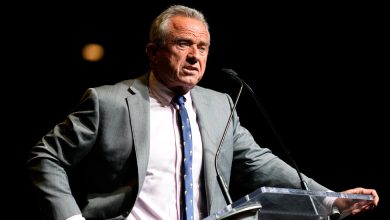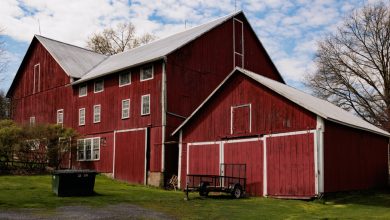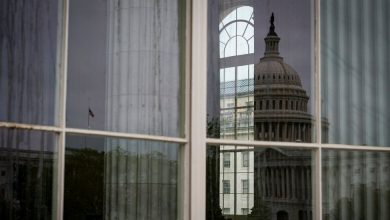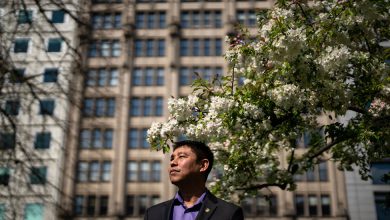Justice O’Connor to Be Memorialized in National Cathedral Service

Justice Sandra Day O’Connor, the first woman on the Supreme Court and the deciding vote in some of the most hot-button issues facing the country, is expected to be honored at Washington National Cathedral on Tuesday.
President Biden and Chief Justice John G. Roberts Jr. are among those who will give eulogies at the funeral service for the justice, who as the ideological center of the court wielded considerable power during her tenure.
Justice O’Connor, who died of complications from dementia this month at 93, was baptized in the Episcopal Church, regularly worshiped at the National Cathedral and had sat on its governing board.
The service is scheduled to start at 11 a.m. Eastern time, the second day of ceremonies in Washington, where the justice had served for 24 years before she retired in 2006.
On Monday, she lay in repose in the Great Hall of the Supreme Court, as her former law clerks took turns watching over her coffin.
The current justices, along with retired Justice Anthony M. Kennedy, attended a private service at the court, along with the justice’s family and clerks.
Justice Sonia Sotomayor, the third female justice, spoke of Justice O’Connor’s commitment to creating an atmosphere of collegiality at the court and added that she believed Justice O’Connor would be “smiling, knowing that four sisters serve” on the nine-member court.
The Rev. Jane E. Fahey, one of Justice O’Connor’s first clerks in the 1980s, remembered her for “her cowgirl grit, energy and no-nonsense sense of duty.”
Vice President Kamala Harris and her husband, Doug Emhoff, later arrived to pay their respects.
Justice O’Connor, the daughter of an Arizona rancher, spent a colorful childhood on the Lazy B, where her family raised cattle in the high desert along the border of Arizona and New Mexico.
She joined the Supreme Court in 1981. Fulfilling a campaign promise to appoint the first woman to the court, President Ronald Reagan nominated Justice O’Connor, who at the time was an appeals court judge in Arizona.
She announced her retirement because her husband, whom she met when both were students at Stanford Law School, had been diagnosed with Alzheimer’s disease years before.
During her retirement, the justice focused on two causes, judicial independence and civics education. She also traveled with her grandchildren and wrote two children’s books that drew from her childhood on a ranch.
In October 2018, she announced that she had been diagnosed with the beginning stages of dementia and would withdraw from public life.



